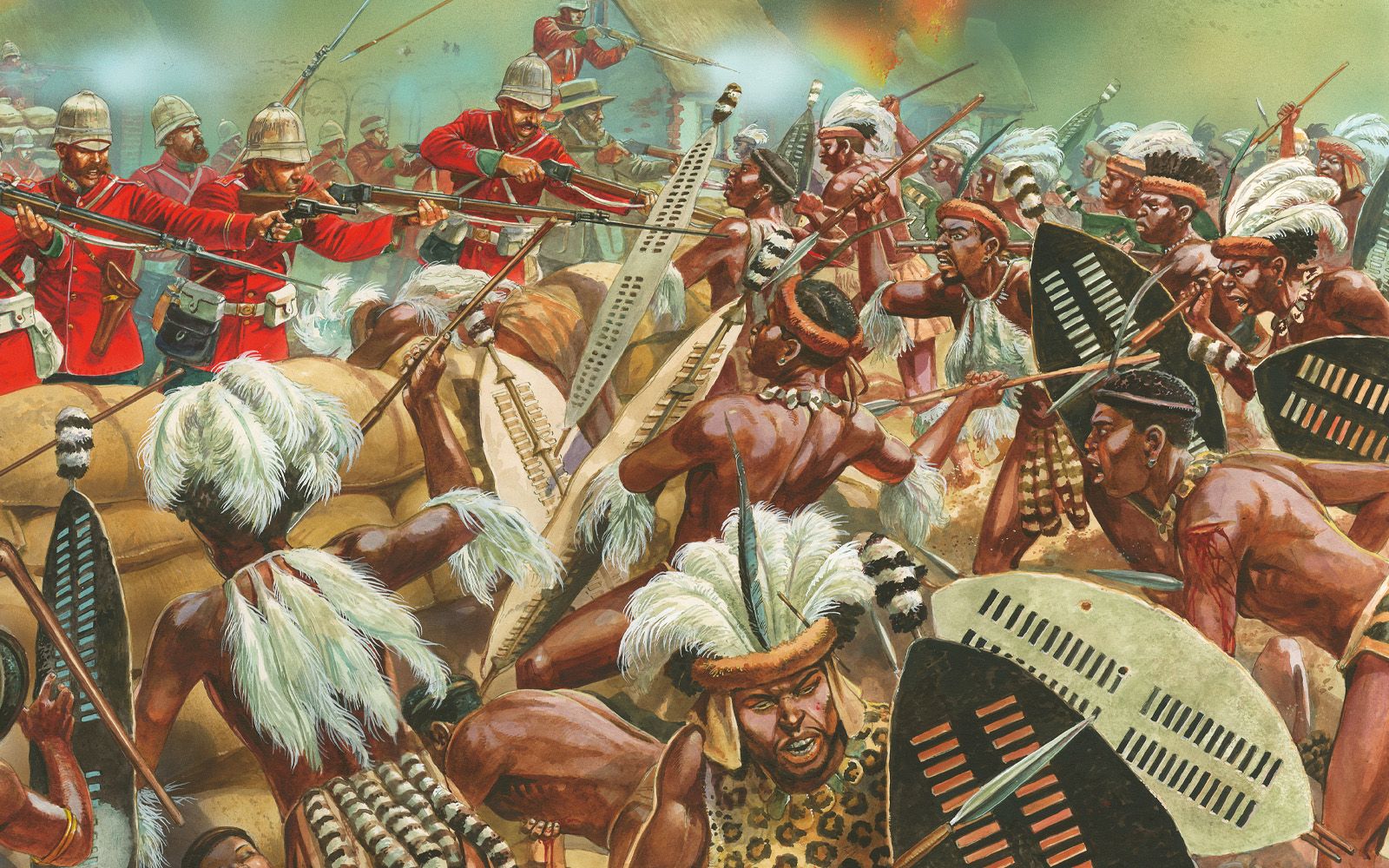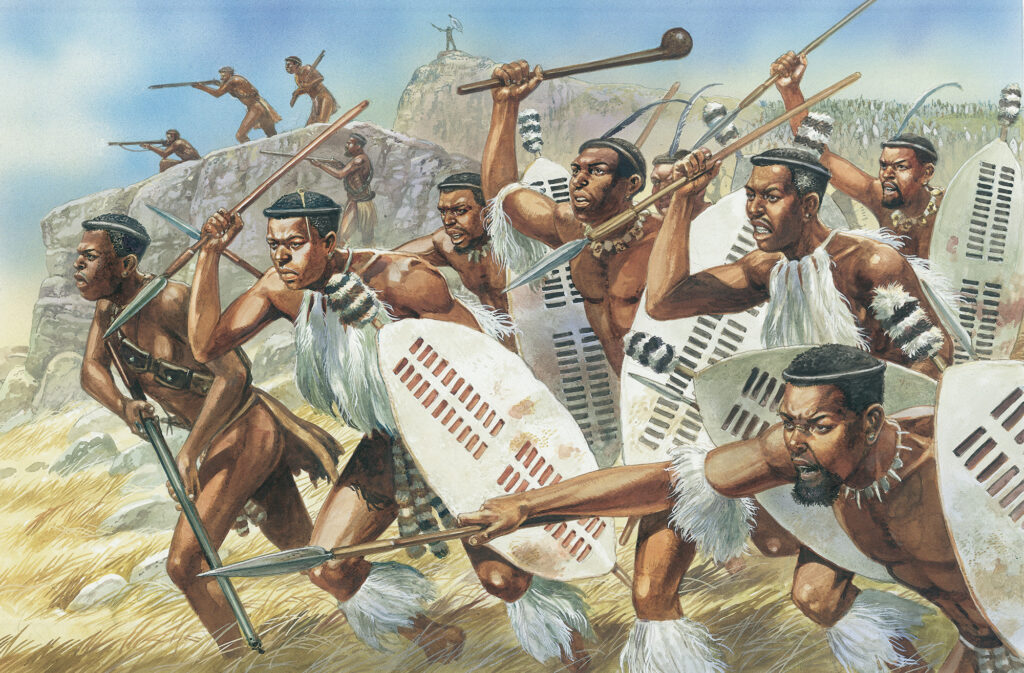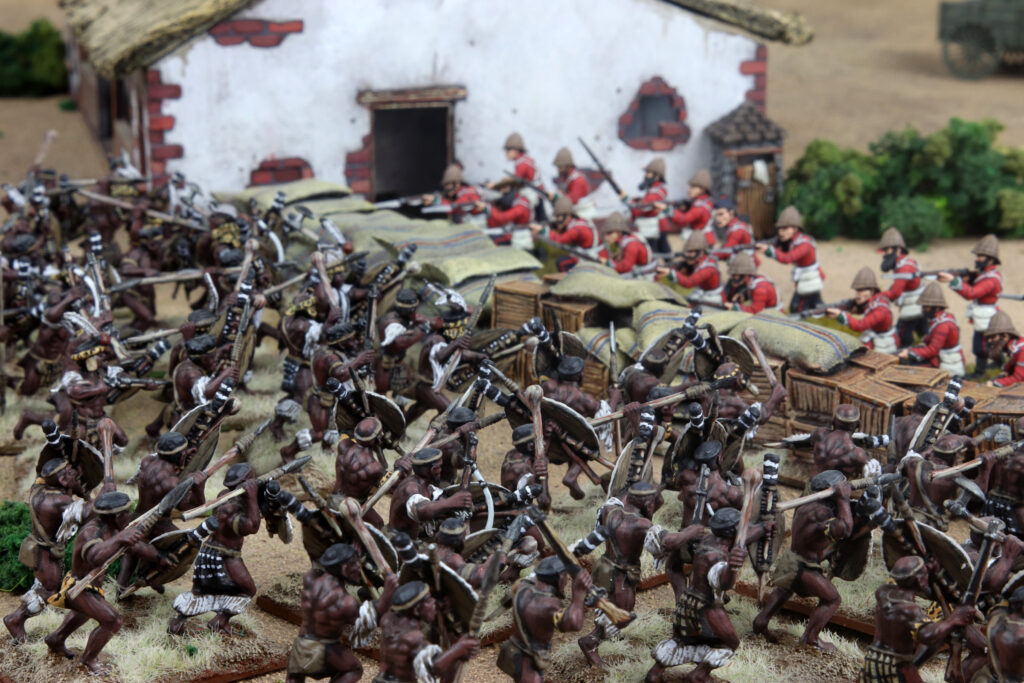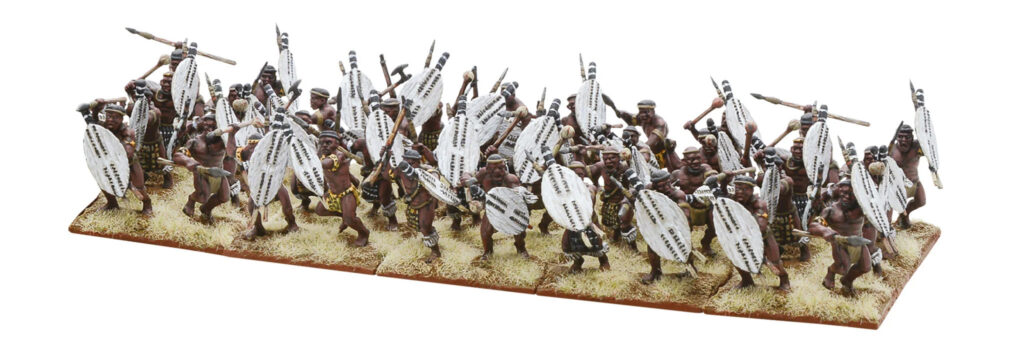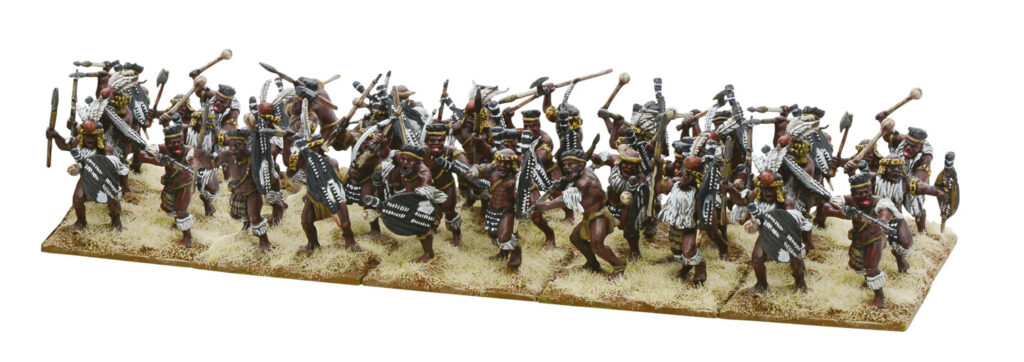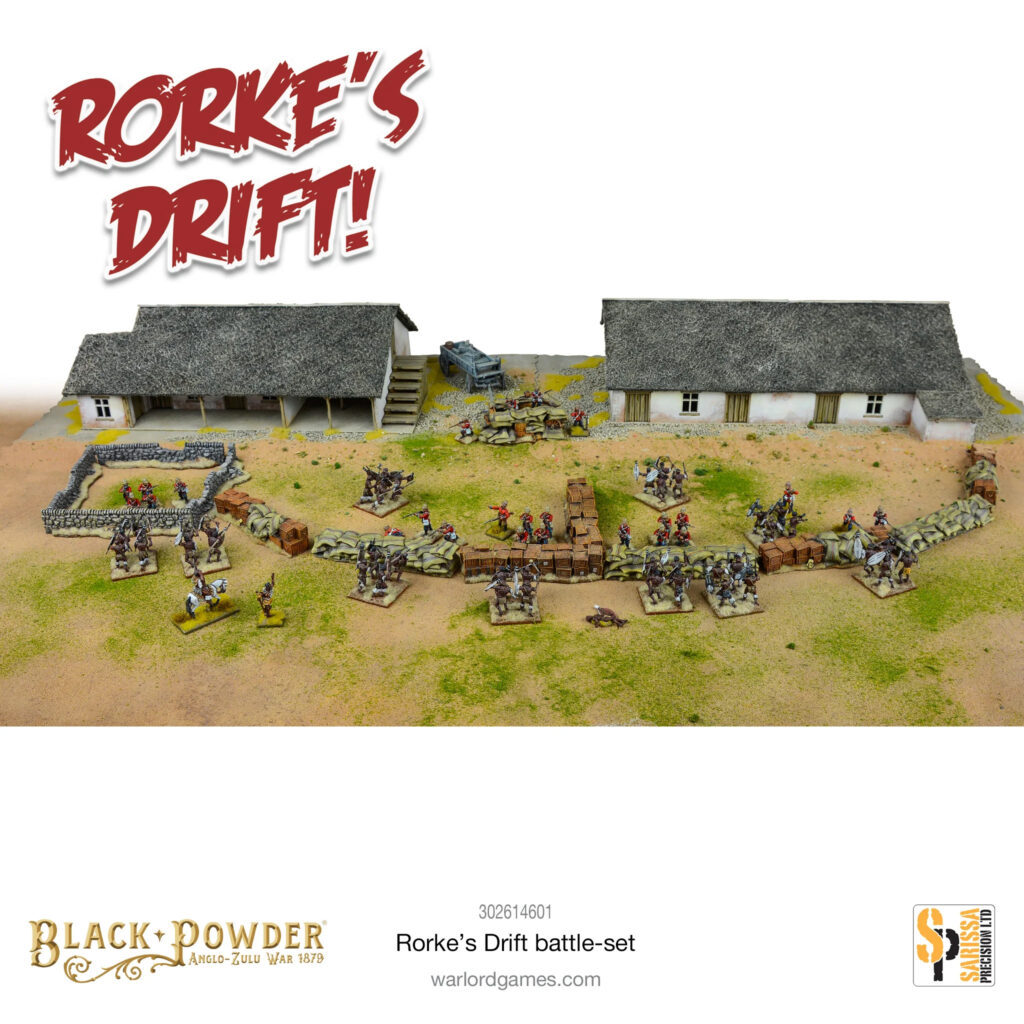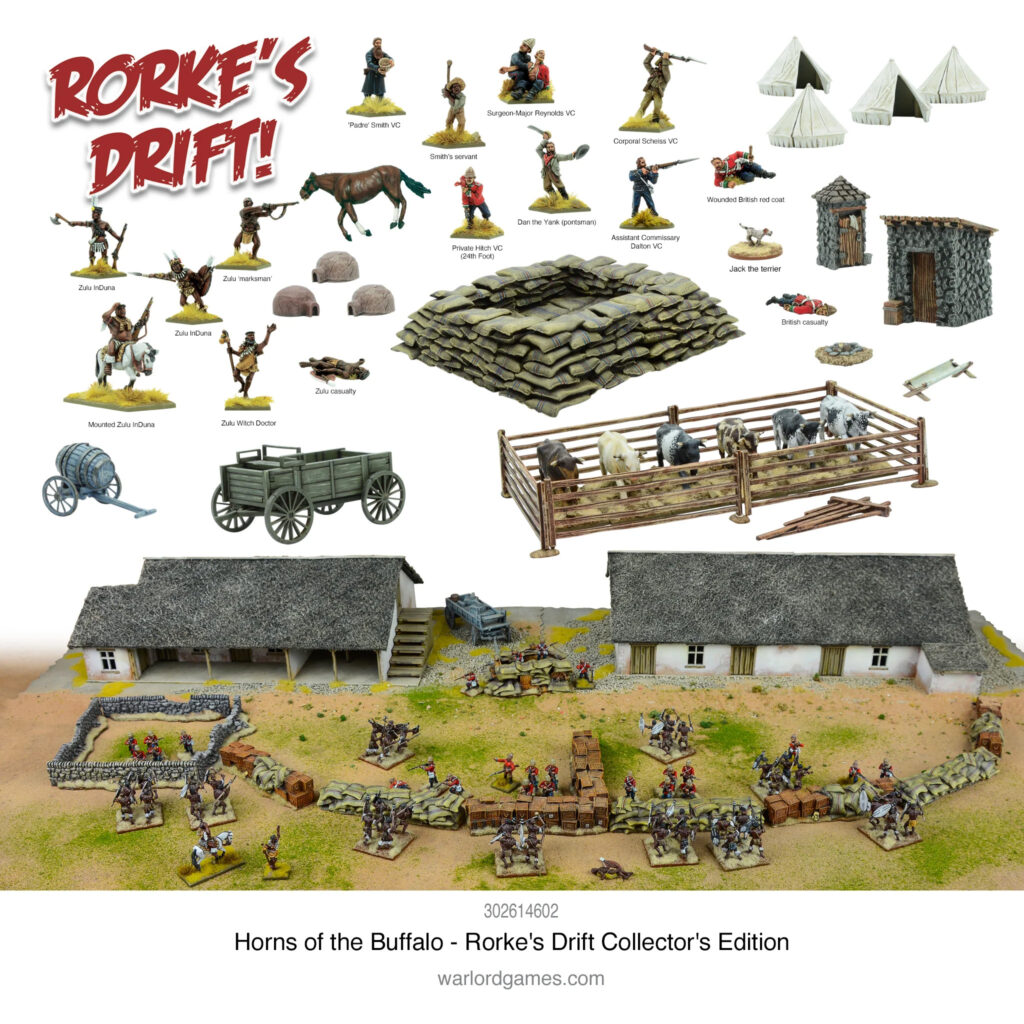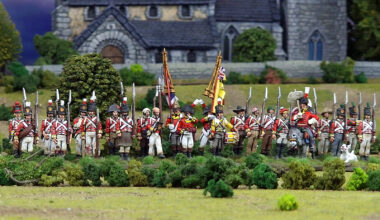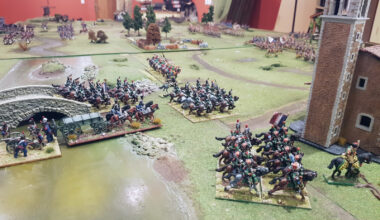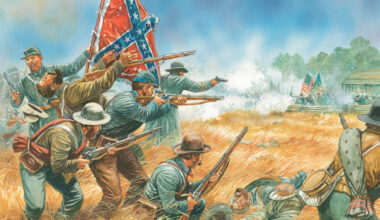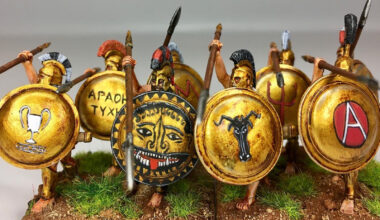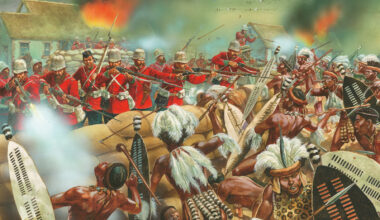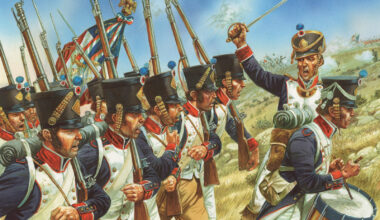We’ve all seen the legendary war movie Zulu, right? If you haven’t, stop reading right now and go watch it – come back when you’re done. Right, now that’s out of the way…
Today, we’re looking at the men portrayed as the antagonists in that absolute classic – the eponymous Zulu warriors! Far from the barbaric hordes that they were often depicted as (and believed to be at the time), the movie does provide some hints as to their advanced military organisation, and offers a glimpse at just why they are such a fascinating army to collect and play in games set right at the end of the period covered by Black Powder.
When we talk about ‘Zulu’ or ‘Zulus’ in this article, we’re referring to the forces of the Zulu Kingdom (KwaZulu in the Zulu language), ruled in 1879 by King Cetshwayo. The Zulu Kingdom, which had risen to prominence in the early 19th Century under the legendary Shaka, was by 1879 a widespread and aggressively militarised society in Southern Africa, with a well-developed martial tradition and a fearsome reputation among neighbouring states as warriors and conquerors. To European eyes, their weaponry, society, and mode of dress seemed ‘primitive’, and it is perhaps this contempt more than any other factor which led to the British forces so catastrophically underestimating the Zulu forces in the lead-up to their crushing defeat at Isandlwana. In an era of breech-loading rifles and powerful artillery, their equipment certainly seemed primitive – the short stabbing spear known as the iklwa, the longer thrown assegai, the iwisa cudgel (more commonly known as the knobkerrie), and the large cow-hide shield (while firearms were largely disdained as cowards’ weapons); but in the hands of well-trained and motivated warriors proved absolutely lethal in close-quarter battle. Shaka had instituted a number of important military reforms during his reign, which formed the basis for Zulu tactics and organisation decades later. Tactically, Zulu soldiers were grouped together into regiments (with proud and colourful names such as ‘Humblers of Kings’ and ‘Dust Raisers’, and unique patterned markings on their shields) based on particular age groupings, and supported by younger boys who acted as porters and assistants, with the overall force being known as the impi. Discipline was harsh, with failure often punished by death, and this produced a force which, although it could be defeated, was very difficult to rout and put to flight.
Perhaps the most important (and certainly the most famous) aspect of Zulu warfare was the battlefield formation known as the ‘Horns of the Buffalo’. This was fundamentally an encirclement tactic, with a left and right ‘horn’ flanking the enemy to pin them in place for a crushing attack by the main ‘chest’ force, with the ‘loins’ acting as a reserve or exploitation force behind. This tactic was brutally effective against other African nations, and was also used to great effect against rifle-armed European troops who would be distracted engaging the ‘horns’ and unable to engage the ‘chest’ sufficiently to prevent it from reaching hand-to-hand fighting. Once close combat was joined, the Zulu warriors had a clear advantage over both bayonet-armed soldiers and their less warlike neighbours, and it would be here that the battle could be won. The younger, less experienced warriors would be the most eager to close with the enemy, as only by ‘washing their spears’ in enemy blood could they seek the king’s permission to marry, and advance themselves in society. The complex manoeuvring required to properly execute the ‘Horns of the Buffalo’ in battle speaks volumes to the level of discipline, training, and drill of the Zulu military – primitive savages these men absolutely were not!
As we’ve touched on briefly, Zulu regiments were largely drawn up along age group lines, and at their most basic fall into one of two categories – Unmarried or Married. The younger Unmarried warriors would be resplendent in their panoply of feathers and furs, itching to get to grips with the foe and make a name for themselves, while the older Married men fought with no less ferocity but with the added wisdom of experience, wearing the slightly more sober garb and characteristic head-ring which marked out their elevated social standing. Equipment would be basically the same for both groups, although we can well imagine the Married warriors taking the pick of captured equipment and ensuring that their weaponry was the best available, and the tactics used in battle were the same – in Black Powder, therefore, we represent both troop types using a single profile.

With a respectable Hand-to-Hand of 6 and the Bloodthirsty special rule allowing them to re-roll failed attacks in close combat during a game’s first round of hand-to-hand fighting, if they manage to close with the British they can really bring the pain! To represent these proud fighting men on the tabletop battlefield, we have plastic boxed sets for both the Married and Unmarried Zulus, as well as a fantastic value starter army – raising your impi has never been so easy!
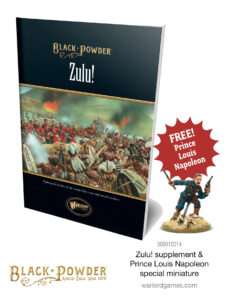
For those wishing to wargame the Anglo-Zulu war, the Black Powder supplement fittingly titled Zulu! is an absolute must-have. Covering the entire year of warfare, from the massacre at Isandlwana, through the British heroics in the face of overwhelming odds at Rorke’s Drift, to the capture of Cetshwayo and the end of the war, Zulu! presents a range of scenarios and rules to refight this oft-overlooked conflict. The scenarios, in particular, are where this book really shines for a Zulu commander, placing them in a variety of situations that require far finer tactical handling of your troops than simply yelling ‘charge!’ and rushing across the table as fast as the dice will allow! With the plastic Zulu boxed sets, you’ve got the perfect troops to drive the British into the sea and expand KwaZulu.
Take up shield and iklwa – the Zulu nation marches to war!
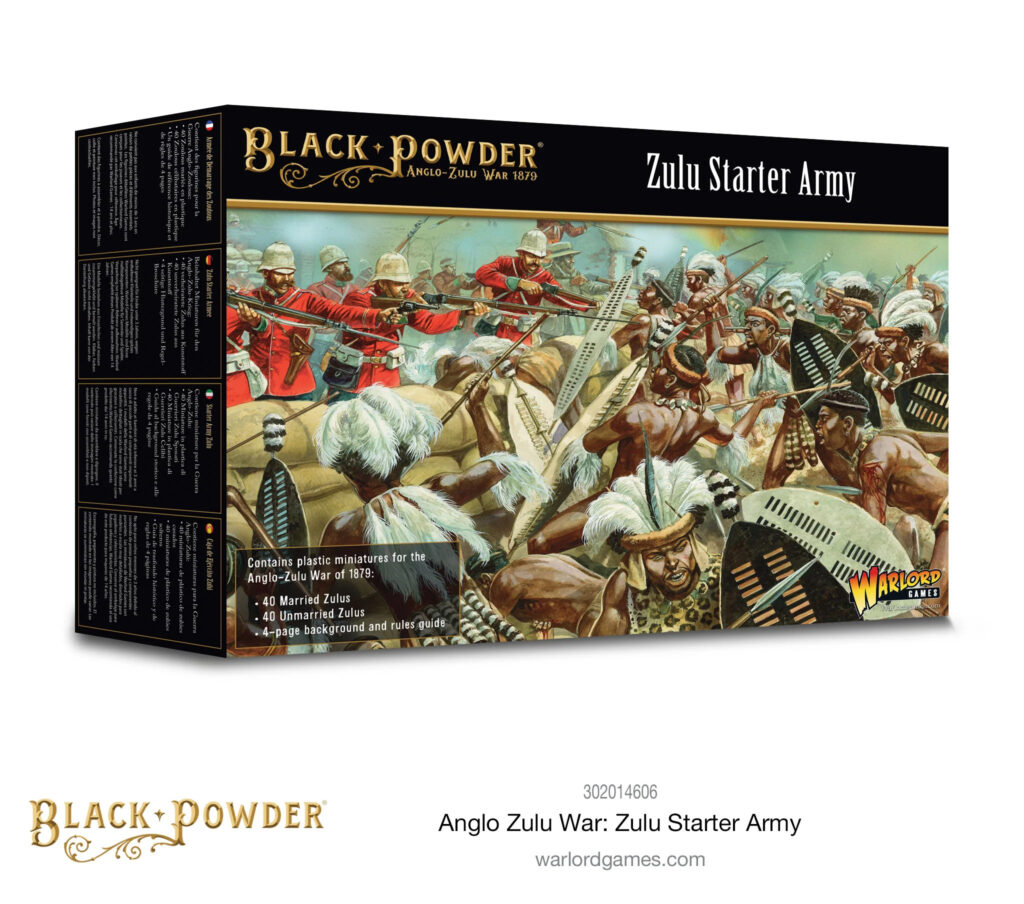
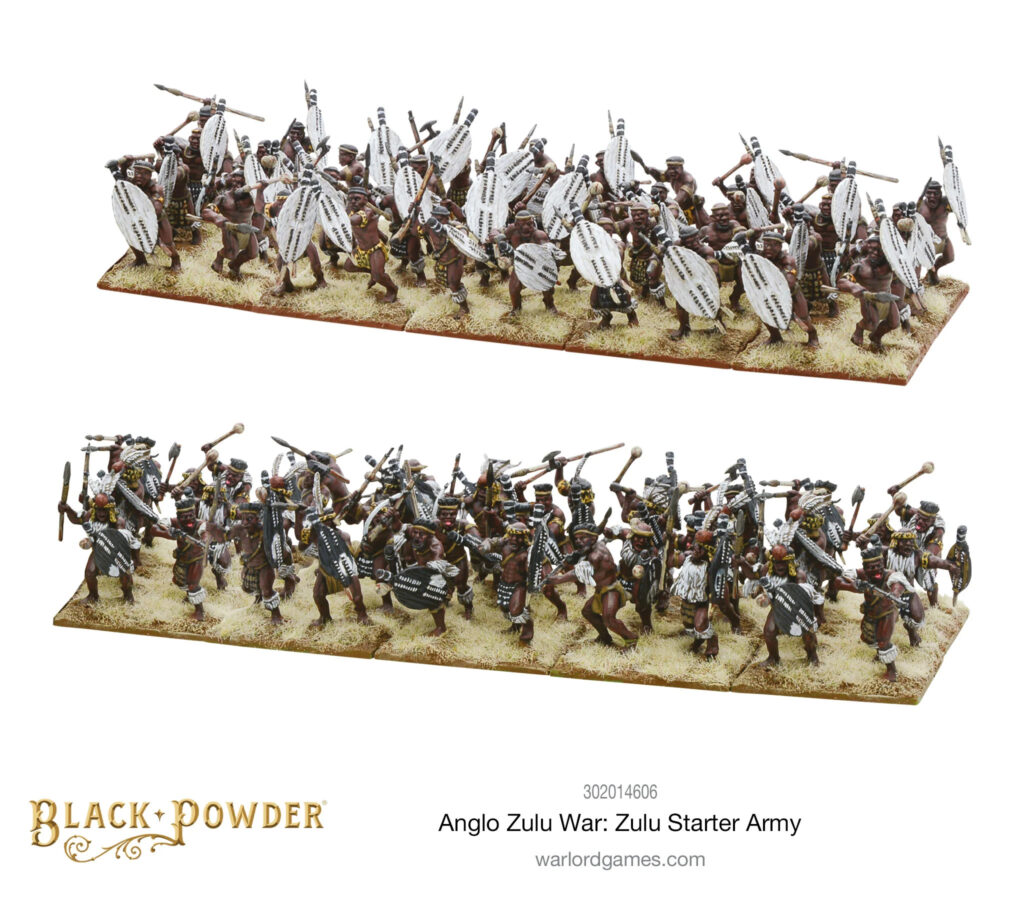
Rorke’s Drift
If you want to replicate the famous Battle of Rorke’s Drift, around which, of course, the film Zulu centres, then look no further than the Rorke’s Drift battle-set, which in addition to 20 plastic British redcoats, 40 plastic Zulus and a host of characterful metal miniatures, is chock full of MDF and resin scenery pieces that will make your tabletop battles come alive. Take the experience even further with the Horns of the Buffalo collector’s edition which doubles down on the scenic elements with extra barricades, walls and animals, and eight extra metal characters!
Other articles in the Forces of Fame Series:
Bolt Action – The Tiger I; Princess Elizabeth (Jubilee Special); Japanese Special Naval Landing Force; M18 Hellcat; Centurion Mk III; British Airborne; M4A3E8 Sherman ‘Easy Eight’; German Fallshirmjäger;
Blood Red Skies – Messerschmitt Bf 110; Ki-43 II ‘Oscar’; Grumman F9F Panther;
Victory at Sea – The Bismarck; Fletcher-Class Destroyers; Kongō; Yamato-class Battleships;
Pike & Shotte (& Pike & Shotte Epic Battles) – Cuirassiers; Polish Winged Hussars; Dragoons;
Black Powder (& Black Powder Epic Battles) – The Iron Brigade; 95th Rifles;
Black Seas – HMS Victory;
Hail Caesar / SPQR – Dacian Falxmen; Hoplites;
